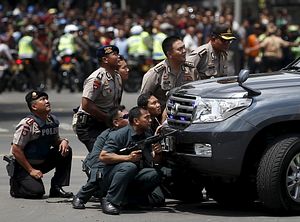The rise of the Islamic State in Iraq and Syria has been watched with horror from around the globe, no less so in Asia. Seeking a more nuanced perspective on what drives regional fears and government responses, The Diplomat asked several experts about the impact of the rise of the Islamic State (also known as ISIS) on Asia’s subregions: Central Asia, South Asia, Southeast Asia, China, and Northeast Asia.
Edward Lemon weighs in on the heavy-handed response of Central Asian governments to the specter of ISIS while Arif Rafiq points out that the South Asian marketplace of jihadist groups is already vast and active, making it difficult for ISIS to make deep roots. Southeast Asian governments haven’t quite panicked, Joshua Kurlantzick argues, in part because they’ve had experience since the late 1990s dealing with local radical groups. Michael Clarke explains that in China, the ISIS threat has dovetailed with prior repression of Uyghurs in Xinjiang – regardless of the actual depth of the links between the two. Finally, Shannon Tiezzi takes a look at Northeast Asia – the farthest afield from Islamic States’ base in Iraq and Syria – and finds hints of influence in calls for global cooperation and domestic security laws.
Removed from the actual theater of conflict in Iraq and Syria, Asian governments nonetheless have to contend with forces that ultimately have global aspirations and spread a virulent ideology. How they have reacted has implications not only for domestic governance but for the global fight against extremism.

































